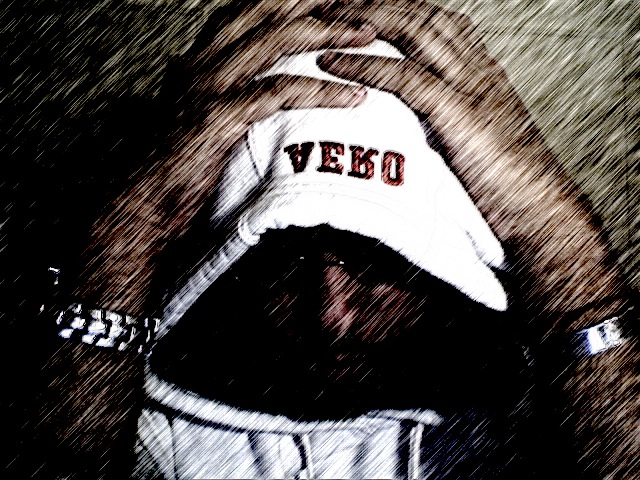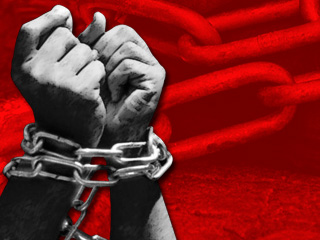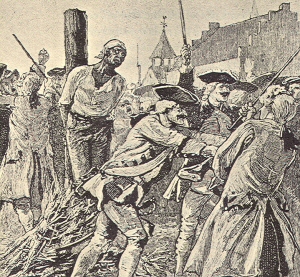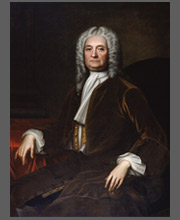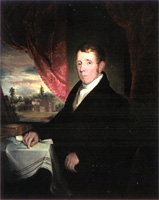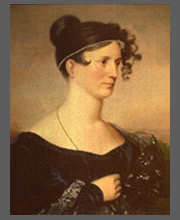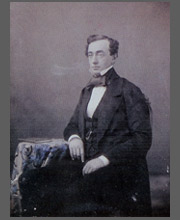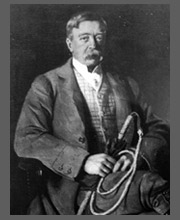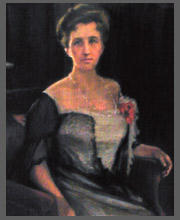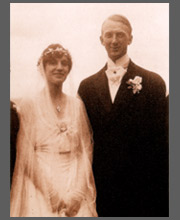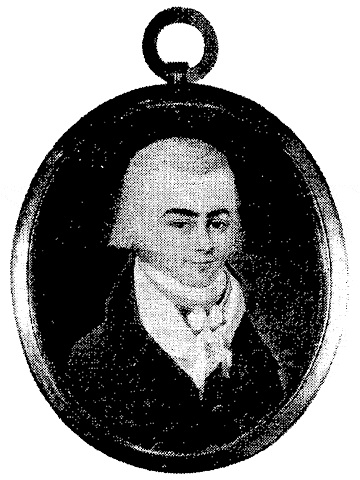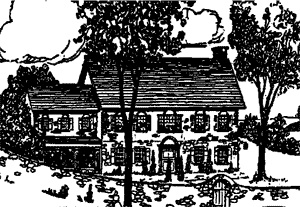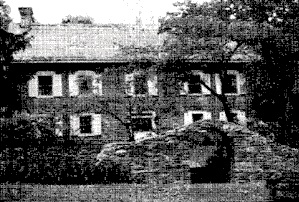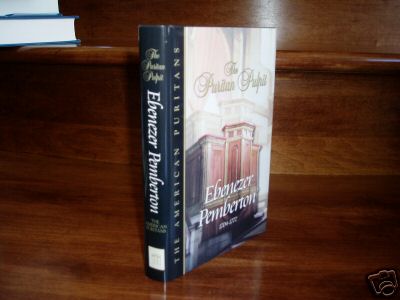User:HaranRFrom The Peopling of New York CityMedia:Asheru - The Boondocks Theme.mp3 CHC Research Proposal
The process for searching for ordinary peoples was very arduous. Some days I might have dedicated hours upon hours to finding information on the slave owners that I was assigned, only to find close to nothing. I visited several places along with my classmates in order to research my given immigrants, many of which include the New York Public Library, the Municipal Archives and Ellis Island. I searched through databases, newpaper articles, and census data, among other things, in order to better understand the lives of the immigrants whom I was assigned. The most information I found, however, was located in genealogical records. I found information on mainly three people, George Clarke,Ebenezer Pemberton and Lewis Gomez. George Clarke was lieutenant governor of New York, therefore his life was very well documented. Ebenezer Pemberton was a preacher who published several of his sermons. Lewis Gomez was a merchant who specialized in the trade of wheat. Normally, this wouldn't be noteworthy, however it just so turns out that the estate that he built was turned into a national museum, a fact that i very luckily uncovered. This museum has chronicled Gomez's family line and restored the Gomez family home since it is the oldest Jewish Residence in the United States.
ResearchGeorge Clarke(English; no wealth listed; Court Party; lieutenant governor; South Ward; Barbara mentioned but not accused) Birth:1676 Death: Jan 12, 1760 George Clarke was lieutenant governor and the acting governor of New York. He was born in Swainswick, Somersetshire, England. He is the son of George Clarke, a government official. His mother's name is unknown. Although he only recieved a common grade school education, he did service two years with an attorney. For two years after that, he practiced law in Dublin, Ireland. His career as an attorney ended when he assaulted a merchant. His uncle, William Blathwayt, auditor general of plantations, arranged Clarke's appointment as his deputy in New York in 1702. Blathwayt was also a member of Parliament and the Board of Trade. Clarke arrived in New York on July 23, 1703.He was a public official in the colony of New York for forty-two years. He married Anne Clyde, daughter of Edward Clyde, governor of North Carolina as well as a relative of Queen Anne and Catherine Rigby. They had ten children. Clarke was given the title of secretary of the province after the death of Matthew Clarkson in 1703. On February 20,1705, Clarke was appointed clerk of the council of New York, a position he held from 1716 to 1736. He also served as a judge on the court of appeals.As a member of the "court party," Clarke had close relationships with governors John Montgomerie (1728-1731) and William Cosby (1732-1736). He also had ties with other influential people, such as Horace Walpole. In 1738, Clarke bought a hundred-acre estate on Long Island (now North Hempstead). In 1718 Clarke was commissioner in the adjustment of the New York-Connecticut boundary. He was elected president of the council in 1736 and served as acting governor after William Cosby's death on March 10, 1736. In June 1737, John West, baron De La Warr, received appointment for governorship. Clarke offered to purchase his governorship, but De La Warr refused. De La Warr however never went to New York, so Clarke exercised all the powers of governor anyways. Clarke succesfully neutralized rival factions throughout he governorship. However, towards the end of his administration, Clarke faced strong opposition from the political following of Chief Justice James De Lancy that differed over the issue of control of governmental spending. Clarke permitted legislature to designate appropriations for public money, thus giving legislators more power over public policy. He also signed into effect measures for paper money, limitation on the life of revenue acts and the triennial election of assemblymen. He tried but failed to get New Yorkers to diversify their economy and develop manufacturing. He managed to befriend the Seneca Indians and thus the Indians prohibited construction of French trading posts on their frontier lands. Legislation on aid for immigrant settlers on the frontier was refused to Clarke. He did little to quell the hysteria during the "Great Negro Plot" in 1741. He did however use his influence to permit seventy-two accused people safe passage out of the colony. Clarke aquired 102,467 acres of land in the Mohawk Valley, lands that were released to him when the patents were granted. When the colony's new executive, George Clinton, arrived in 1743, Clarke was no longer needed as acting governor. Clarke was captured on his return to England by a French privateer and was held prisoner and later released. He obtained indemnities for losses he sustained during his captivity and the fire set to his home during the "Great Negro Plot" of 1741. He purchased an estate, entitled "Hyde," in the county of Chester, England. He died and was buried in Chester Cathedral. In 1817, His grandson, also named George, started construction on his famous project, also entitled "Hyde Hall" This propert sits on a hillside at the foot of Mount Wellington and has a 10-mile view of the neighboring lake, Otsego lake. George hired Philip Hooker, whose worked on such buildings as the Hamilton College chapel, Albany Academy, Albany City Hall and the New York State Capitol building, to draw up designs for the hall. George Clarke died in 1835 and construction on the hall stopped. His estate and fortune was passed onto his son George Clarke Jr., a landlord and hops speculator. However when the hops market crashed in the late 19th century, George Jr. went bankrupt and was forced to give up the title to the mansion. However, due to his wife's wealthy family (the Averell Carter family), they were able to buy back the mansion. The masion fell into disrepair, however The Friends of Hyde Hall organization was able to restore it and successfully put it on the National Register of Historic Places and declare it a national landmark. Family Line
Captain Thomas Clarke was born in England in 1692. When he came to America, he was a retired officer of the British army. He married Mary Stilwell in 1745, daughter of Richard. The had three children: Mary, Charity, Maria Theresa. He purchased a farm on the west side bounded by the lands of Sir Peter Warren and Yellis Mandeville (from the south), Bryant Schuyler and Widow Cowenhoven (from the north), and Jolin Horne (from the east). It was bounded by the Hudson River on the west. The land was 94 acres and cost $2,647. On this land, he erected a mansion which he called "Chelsea." This house was later burned down. James Faviers(French; 60 pounds wealth; merchant; no party affiliation; East Ward; Cajoe accused but not arrested) I found a possible match in a 1727 New York passenger and immigrant list. He might have had a wife named Charlotte.
Lewis Gomez(Jewish; 80 pounds wealth; no party affiliation; merchant; Montgomerie Ward; Cuffee burned) The Gomez family line lived in Spain for many generations before leaving to America. They survived the Spanish Inquisition during the late 1400s, The practice of expelling Jews from trades and land was common since 5th century CE, however, this practice reached its climax during Inquisition. Surviving Inquisition proved to be difficult because of their familial connections to rich Jews. They were connected to the Santagels, a rich and powerful family who, because of their vast monetary assets, were a particular target for Inquisition. Several members of the Santangel family were burned at the stake. The Gomez family was not left unaffected. Alfonso Gomez and his wife, Violante de Santangel were posthumously condemned of heresy and burned in public. The Gomez family was lucky due to two reasons, they were literate and had international contacts. These were attributes that could not be ignored by the Spanish hierarchy and thus helped tem survive the expulsion from Spain in 1492. Following the Inquisition, members of the Gomez family served as counselors for the royal family. Isaac Gomez, born 1620, became financial advisor of Philip IV. Philip was dependent on Gomez to counsel him on is ill-social conduct, mainly his womanizing. The king also had a mentally retarded son to take care of. The king granted Isaac favor even though of him being Jewish. He even had a secret warning to help Isaac avoid Inquisitors. However, when finally caught by Inquisitors, Isaac made sure that his wife and son were smuggled out of the country. After being released from prison, Isaac and his family moved to England. His son Louis (the immigrant that I am researching) soon moved to New York. However, before arriving in New York, Gomez made a stop in Jamaica and married Esther Marques, daughter of a high-placed Jamaican family. The couple arrived in New York in 1696. Louis opened a general store in Lower Manhattan. He then began to trade wheat, a business decision that made him a rich man. He adopted the anglicized name Lewis. In 1710 he funded a memorial which led to the city approving his shipping wheat to Madeira, an island in the Portuguese archipeligo. However this act of “charity” has been interpreted by many historians as actually being a bribe. Lewis also surveyed a known Algonquin meeting ground along the Hudson River and, with permission from the Algonquin, built a water mill. He also attained a land grant for the area. In 1728 he was elected “parnass” of the Shearith Israel synagogue, where he gave was able to give support to the Jewish community by raising money. His contributions helped fund the steeple for Trinity Church. Lewis Gomez died in 1740. Lewis’ son Daniel soon joined his father in the wheat trade at the age of fourteen. Though he mainly traded wheat, he expanded his father’s business and started trading other goods such as stockings, suspenders, ginger, buttone, nightshirts, gunpowder, swords, preserved goods, sick and sailcloth. He also was the first to use Native Americans as furtrappers. The Gomez name soon became synonymous with the fur trade. Daniel also married a member of Jamiacan royalty, Rebecca de Torres, like his father. She, however, died five years later during childbirth. Daniel later married Esther Levy in Curacao. In 1710, Daniel bought 2,500 acres of land in present day Newburgh. He divided the land into seven plots, each for a member of the Gomez family. In 1714, erected a house. The house became known as the “Jew House” and Daniel became known as “Gomez the Jew,” both most likely anti-Semitic sentiments. Their stream became known as “Jew’s Creek." The Gomez family treated their Native American neighbors well unlike their other neighbors. This is most likely due to their belief that Indians were descendants of the “Ten Lost Tribes of Israel.” The often spoke out and held meetings against the mistreatment of Native Indians. In 1740, after the passage of the Naturalization Act, Daniel became a voting citizen. Before the passage of the Naturalization Act, Jews did not have the right to vote. Like his father, he too became parnass of Shearith Israel synagogue. During the revolutionary war, the synagogue was forced to close. Daniel, along with many other Jews, fled areas held by revolutionaries to avoid getting caught in the crossfire during fighting. He and his family fled to Philadelphia, where he founded the Mikveh Israel Sephardic congregation. The direct Gomez family no longer exists, however there are still decendents of Isaac Gomez. Two such example were Justice Benjamin Cardoza and poet Emma Lazarus. In 1772, Daniel Gomez sold their house in Orange County and 600 acres of land to Wolfert Acker, a leader of the militia during the revolution. He built a grist mil, a saw mill, and a brick factory in its stead. After his death in 1799, the property passed to his son, William. The property was later sold once again to an Edward Armstrong, who bought the house for its view of the Hudson River. He built a house with Greek pillars on the hill. His son, Harry, built an annex on the Mill house and lived in the house with his wife, Sara. After their child, Emily, fell into “Jew’s Creek” and drowned, the couple sold the property to a Dard Hunter, a craftsman. After Dard moved to Ohio, the Gomez house fell into disrepair. Mildred Starin and her husband Jeffrey later aquired the property and succeeded in declaring the Gomez Mill House a national museum and put it on the National Register of Historic Places. Currently, the Gomez Mill House is run by the American Historical Society.
Ebenezer Pemberton(English; 55 pounds wealth; no party affiliation; minister; South Ward; Quamino transported) Both Ebenezer Pemberton Sr. and Jr. were clergymen. Ebenezer Sr. was born in Boston Massachusetts in January of 1761. He died there on February 13, 1717. His father was father was a founder of the Old South Church. He graduated from Harvard in 1691 and tutored in that college until he was ordained in 1700. He was pastor of Old South Church until his death. Ebenezer Pemberton Jr. (the person I am researching)was born in Boston, Masachusetts, in 1704 and died there on September 9, 1779. He graduated from Harvard in 1721. He was chaplain at Fort William from 1722-1726 and was ordained pastor of the 1st Presbyterian church in New York City, where he pastored for twenty-six years. During his stay in New York, he was president of the board of correspondents charged by the Society in Scotland to spread Christian beliefs amongst Native Indians. Afterwards he ran the Brick church in Boston until 1775. His friendship to Governor Tomas Hutchinson cause him to be accused of disloyalty to the crown. After the church was closed in 1775, Ebenezer Jr. did not preach again. He recieved a Doctor of Divinity degree from Princeton in 1770, the first ever degree of the sort to be given. Several of his sermons were published. Examples of some are: =>A compleat body of divinity: in 250 expository lectures on the Assembly's shorter catechism: wherein the doctrines of the Christian religion are unfolded, their truth confirmed, their excellence displayed, their usefulness improved, contrary errors & vices refuted & exposed, objections answered, controversies settled, cases of conscience resolved, and a great light thereby reflected on the present age =>Meditations on Divine Subjects =>Gospel order revived being an answer to a book lately set forth by... Increase Mather... entituled, The order of the gospel, &c.../ =>An account of the life of the late reverend Mr. David Brain minister of the gospel, missionary to Indians, from the honourable Society in Scotland for the propagation of Christian Knowledge, and pastor of a church of Christian Indians in New Jersey. Who died at Northampton in New- England, October 9, 1747, in the 30th year of is age. Chiefly taken from his own diary, and other private writings, written for his own use and now published. His book, The Puritan Pulpit, is currently being sold on ebay for $10. [1]
Murdock was part of the "Algonqiun Round Table," a group of theatrical and literary figures that met for a decade beginning in 1919. The group was celebrated for being glamrous, irreverent, acerbic, worldly and clannish. The group met at Algonquin Hotel on W. 44th St in the Pergola Room but later moved to the Rose Room by Frank Case. Its central figure was Alex Woolcott (drama critic of New York Times). The group disbanded at the onset of the Depression because its was no longer found funny in the social atmosphere. Winant Van Zant(Dutch; 70 pounds wealth; no party affiliation; blockmaker/slave trader; East Ward; John accused but not arrested) I found a possible match in a 1785 NJ census in Middlesex County, New Brunswick. -His job was to liquidate and discharge estates of insolvent debtors to their creditors who had petitioned to the mayor's court. -Store was burned down during New York Slave Conspiracy. He later testified during the court trial. -Daughter died of illness.
-Jointly owned with William Beekman. -Land bounded to the north by 62nd St, to the east by 2nd Ave, to the west by 3rd ave and to the south by 61st St. -Adam Treadwell (fur merchant) bought this land in 1815 and built a farm. After his death, Beekman's daughter bought the land parsel. Brownstones and row houses were erected in the 1860s and 1870s. The neighborhood was designated a Historic District in 1967. Major landmark: Trinity Church.
-Built an large white mansion in Douglaston (northeastern Queens) in 1819. -Mansion now called the Douglaston Yacht Club. Citations1. Jackson, Kenneth, T. 1993. The Encyclopedia of New York City. New Heaven: Yale University Press. 2. Kurinsky, Samuel. 1991. Gomez House the Oldest Jewish. Residence in the USA. http://wwwhebrewhistory.info/factpapers/fp030_gomez.htm (accessed May 28, 2008). 3. Lepore, Jill. 2006. New York Burning: Liberty, Slavery, and Conspiracy in Eighteenth Century Manhattan. Vintage. 4. Pelletreau, W. Smith. 1998. Historic Homes and Institutions and Genealogical and Family History of New York. Baltimore: Genealogical Publishing Company Inc. 5. Unknown. 1817. Hyde Hall’s History and Architecture. http://www.hydehall.org/texts/history.php (accessed May 28, 2008), 6. Unknown. Virtual American Biographies: Ebenezer Pemberton. http://famousamericans.net/ebenezerpemberton/ (accessed May 28, 2008). 7. Weeks, L. Horace. 1898. Prominent Families of New York. New York: The Historical Company.
LinksLink to African Burial Ground website: [2] Link to Slavery in New York exhibit of New York Historical Society [3] Link to New York Slave Conspiracy Trial Transcript: [4] Video Links *Watch Em!*Link to video about Black Slavery in NYC: [5] Link to video- Malcolm X differentiates the Field Negro from the House Negro during slavery times:[6] Def Poetry Jam- Julian Curry:
|
